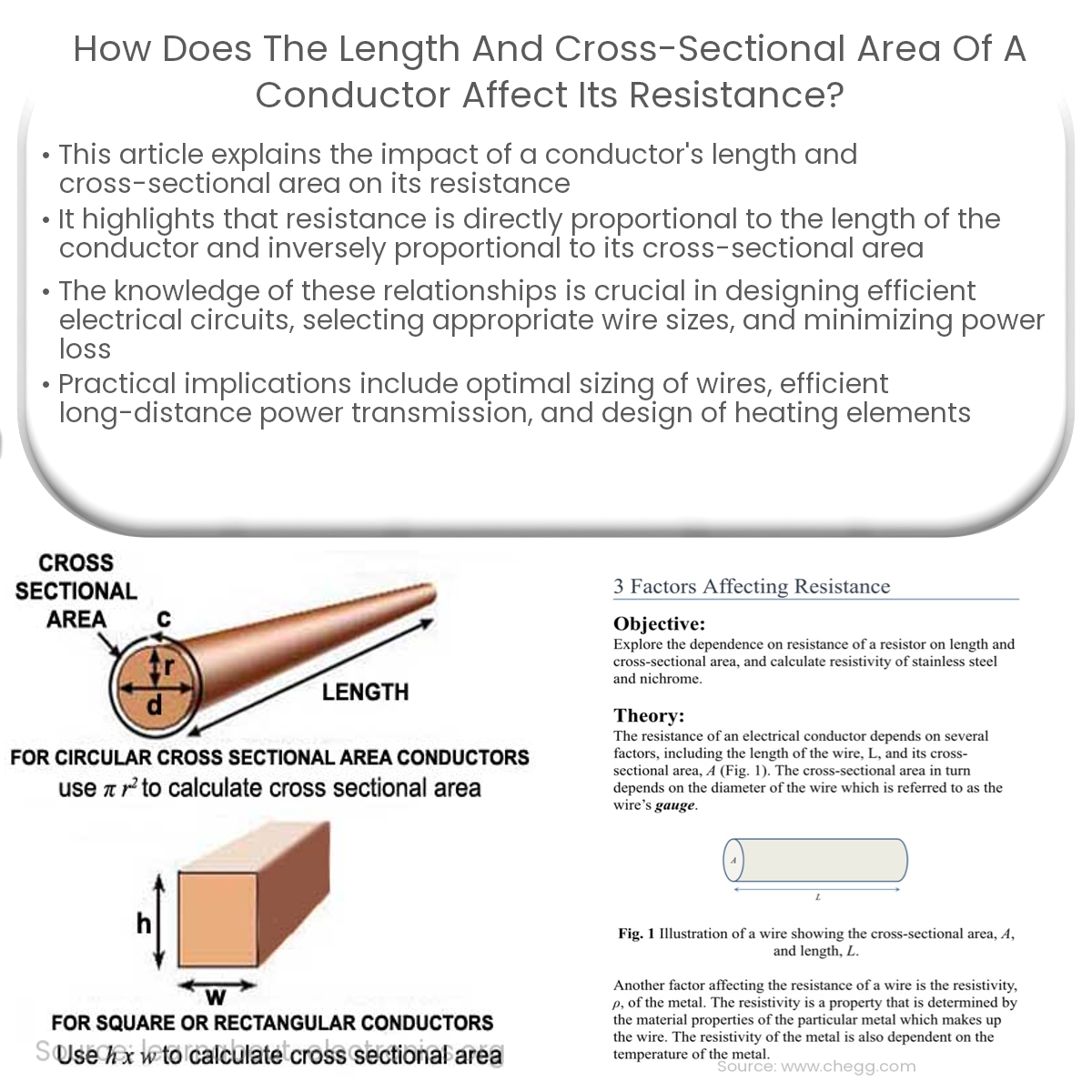Resistance is directly proportional to conductor length and inversely proportional to its cross-sectional area, affecting circuit performance and efficiency.
Length and Cross-Sectional Area: Their Impact on Conductor Resistance
When designing electrical circuits and devices, understanding the impact of conductor geometry on electrical resistance is crucial. The length and cross-sectional area of a conductor directly influence its resistance, affecting the overall performance of the circuit. This article explores the relationship between the length and cross-sectional area of a conductor and its resistance.
Ohm’s Law and Resistivity
Ohm’s law governs the relationship between the resistance (R) of a conductor, the voltage (V) applied across it, and the current (I) flowing through it:
V = IR
Resistivity (ρ) is an intrinsic property of a material that determines its resistance to the flow of electric current. The resistivity of a material depends on its composition and temperature. The relationship between a conductor’s resistance, its resistivity, length, and cross-sectional area can be described by the following formula:
R = ρ(L/A)
Effect of Length on Resistance
From the above formula, we can see that the resistance of a conductor is directly proportional to its length (L). When the length of a conductor increases, the path for electric current becomes longer, and the electrons encounter more collisions with the atoms of the conductor. As a result, the resistance increases. Conversely, when the length of a conductor decreases, the resistance decreases.
Effect of Cross-Sectional Area on Resistance
The resistance of a conductor is inversely proportional to its cross-sectional area (A). When the cross-sectional area increases, the conductor provides more pathways for the flow of electric current, reducing the overall resistance. Conversely, when the cross-sectional area decreases, the number of available pathways for current flow is reduced, resulting in increased resistance.
Practical Implications
Understanding the impact of length and cross-sectional area on a conductor’s resistance has several practical implications:
- Wire sizing: Engineers must select appropriate wire sizes for electrical circuits, considering both length and cross-sectional area, to minimize power loss and ensure adequate performance.
- Power transmission: Long-distance power transmission lines require large cross-sectional areas to reduce resistance and minimize energy loss over long distances.
- Heating elements: In applications such as heating elements, increased resistance due to a smaller cross-sectional area or longer length can be used to generate heat by dissipating electrical power.
In conclusion, the length and cross-sectional area of a conductor directly influence its electrical resistance. Length is directly proportional to resistance, while cross-sectional area is inversely proportional. Understanding this relationship is essential for designing efficient electrical circuits and devices, selecting appropriate wire sizes, and minimizing power loss in various applications.


